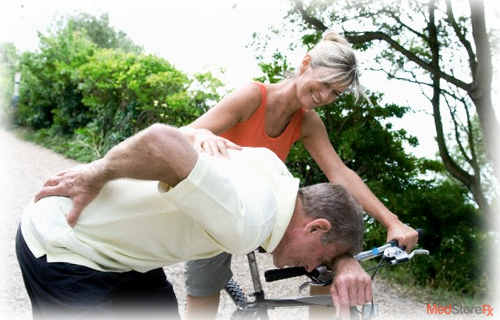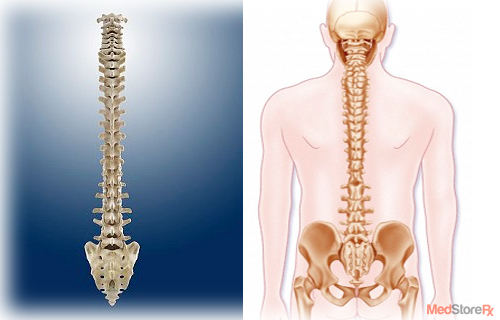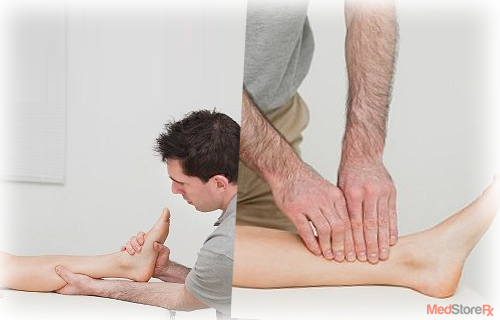Ankylosing spondylitis – a kind of arthritis – is a condition that is associated with the vertebral column. The condition is said to affect the lower back mainly. It is often characterized by joint damages and inflammation of the joint. It initially counters sacroiliac joint that mediates pelvis and spine. However, it does not restrict to this area and can affect any region of the vertebral column. The independent movement of joints becomes restricted as the condition may aggravate and fuse the affected joints. In fact ‘Ankylosis’ refers to fusing of two bones while ‘Spondylitis’ means inflammation of the spine.
Ankylosing Spondylitis is said to be a rare condition. According to surveys, it is found in 1 out of 1000 people. Though its causes are not understood it may be hereditary. The condition is commonly recorded in healthy male individuals during their teens or 20s. Women are 10 times less vulnerable to the condition as compared to men. Ankylosing spondylitis commonly occurs between age group of 20 years to 40 years; however, it can also develop in children.
Symptoms of Ankylosing Spondylitis:
There are certain symptoms of the condition that helps in determining the prevalence of the issue; these are:
Stiffness and ache:
People affected with Ankylosing Spondylitis usually suffer from complications such as stiffness and ache affecting the lower-back, hips as well as butts. These complications usually persist for over three months. The condition, as mentioned above, often onsets from the sacroiliac joint (the lowest and major portion of the vertebral column).
Bony fusion:
The condition is characterized with joining of bones. This happens when bones of the spine grow abnormally and fuse with the other bones in the series. This is called ‘bony fusion’ which may impair the back, hips or neck movement, causing difficulties for a person to perform daily activities. Such fusion when associated to spine or breastbone may restrict expansion of his/her chest while breathing deeply.
Tendons and ligaments ache:
Ankylosing Spondylitis may also affect tendons and ligaments that are attached to the inflamed bones. Inflammation of tendon is called Tendonitis, wherein the affected person may suffer from ache and stiffness in region behind or underneath the heel; for example Achilles tendon at the rear of ankle.
The condition is described as a systemic disease which may have other symptoms such as fatigue, reduced appetite, weight loss, fever, etc.
Diagnosis of Ankylosing Spondylitis:
Ankylosing Spondylitis should be better handled with help of a certified doctor. It is crucial to consult a doctor if you experience any of the aforementioned symptoms. There are various ways of diagnosing the condition; some tests that are commonly suggested by a doctor include:
- Symptoms analysis
- Physical examination in clinic
- X-ray imaging report of the back and pelvis area
- Chest measurement while breathing
- Laboratory test results
Causes of Ankylosing Spondylitis:
What causes Ankylosing Spondylitis is not completely understood and is still a subject in research. However, so far it is believed that the condition may occur due to genetic issues. There is a genetic material which is said to be closely related to this medical issue but not confirmedly associated with it.
A gene called human leukocyte antigen, which is depicted as HLA-B27, is found to be common in most people affected with the condition. In 9 out of 10 individuals with Ankylosing Spondylitis, the gene is discovered to be present. This indicates that if a person has HLA-B27 gene, then he/she is likely to suffer from the issue. However, this does not mean that all people with this gene will surely suffer from AS. According to reports around 8 out of 100 people carry this gene in the body but are not affected with the disorder.
Testing this gene is not said to be a reliable way of determining prevalence of the condition. As people may have this but may not suffer from ankylosing spondylitis. Sometimes the condition may also run in family as the HLA-B27 may be passed on. If a person has close relatives such as brother, sister or mother, etc., affected with the condition, there are chances that one may also suffer from the issue.
Treatment for Ankylosing Spondylitis:
Medical industry does not have any complete cure for the condition, but it can be handled to reduce discomfort and make daily living activities easier. The focus of Ankylosing Spondylitis treatment is to provide relief from pain and stiffness of the affected region and maintain posture. Some common alleviative treatment measures are:
- Physical Therapy
- Occupational Therapy
- Exercises
- Medicinal regimen
- Surgeries
These are parts of treatment and suggested as found suitable by the doctor. Along with these methods affected individuals are also suggested to avoid using tobacco product, as this may aggravate the condition. Affected individuals should sleep on mattresses which are firm and while doing so, ensure that the back is straight. People affected with Ankylosing spondylitis should pay special attention and care for the affected region as sudden trauma can easily hurt the problematic joints of the vertebral column.


 Cart : 0 items - $0.00
Cart : 0 items - $0.00














